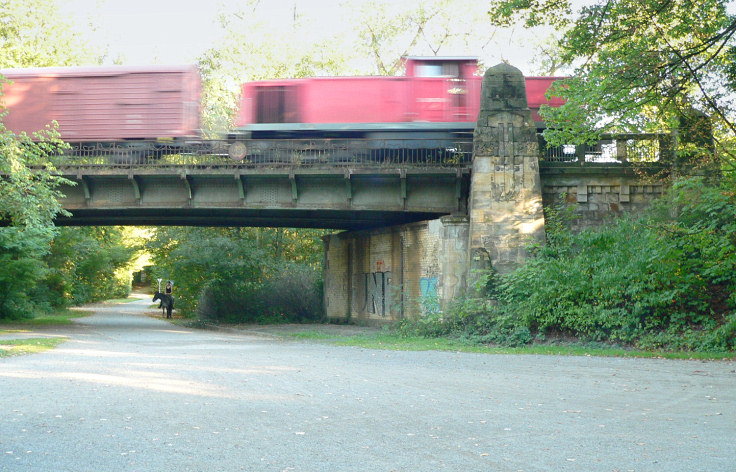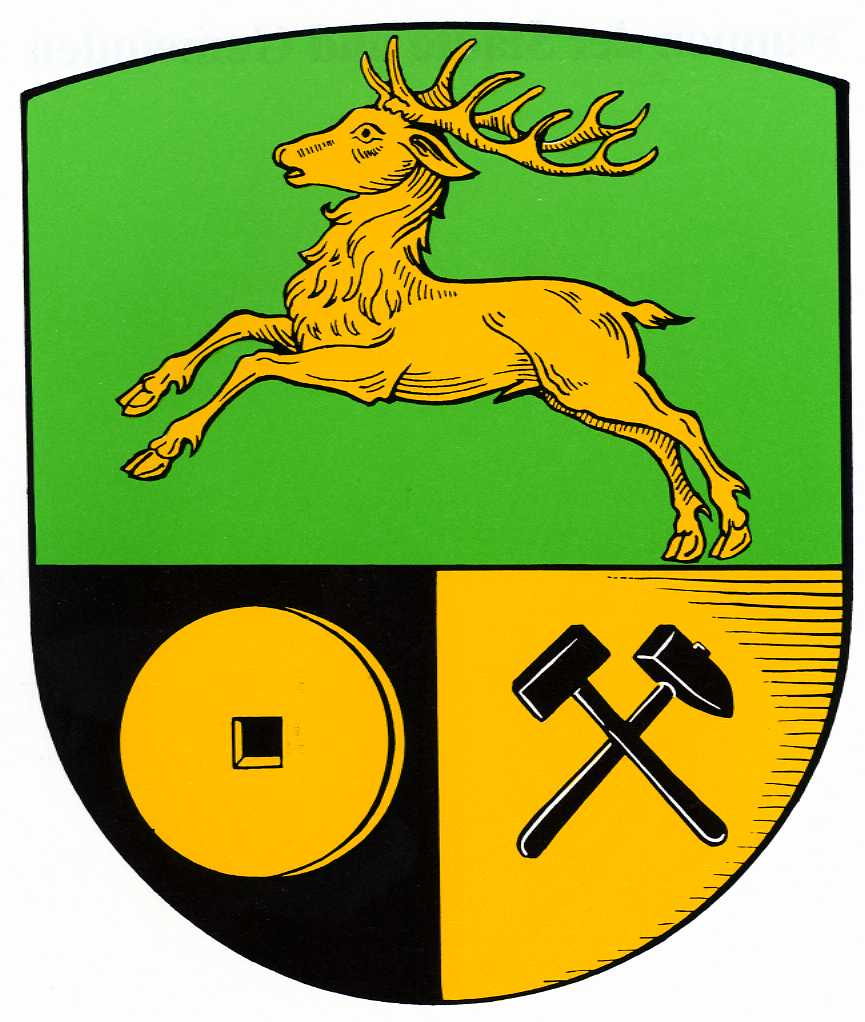|
Lehrte–Celle Railway
The Lehrte–Celle railway is a main line in the east of Hanover Region in Germany. It links the railway hub of Lehrte with the town of Celle, where it connects to the present-day Hanover–Hamburg railway. Until the opening of the "Hare Railway" (''Hasenbahn'') from Langenhagen to Celle on 15 May 1938 and its upgrade to double tracks in 1964 and electrification in 1965 it was itself part of this long-distance route. Today it serves the north-south goods trains and is also used by the S 6 and S 7 trains of the Hanover S-Bahn from Hanover to Celle. The line was planned as the northern branch of the so-called "Kreuzbahn" of the Royal Hanoverian State Railways together with the Hanover–Brunswick and Lehrte–Hildesheim railways and opened on 15 October 1845. On 1 May 1847 it was extended to (then Hanoverian) Harburg. The approach to Lehrte station from the west made it necessary for all trains from Hanover to Celle to reverse in Lehrte. With the construction of the Hano ... [...More Info...] [...Related Items...] OR: [Wikipedia] [Google] [Baidu] |
15 KV AC Railway Electrification
Railway electrification systems using at are used on transport railways in Germany, Austria, Switzerland, Sweden, and Norway. The high voltage enables high power transmission with the lower frequency reducing the losses of the traction motors that were available at the beginning of the 20th century. Railway electrification in late 20th century tends to use AC systems which has become the preferred standard for new railway electrifications but extensions of the existing networks are not completely unlikely. In particular, the Gotthard Base Tunnel (opened on 1 June 2016) still uses 15 kV, 16.7 Hz electrification. Due to high conversion costs, it is unlikely that existing systems will be converted to despite the fact that this would reduce the weight of the on-board step-down transformers to one third that of the present devices. History The first electrified railways used series-wound DC motors, first at 600 V and then 1,500 V. Areas with 3 k ... [...More Info...] [...Related Items...] OR: [Wikipedia] [Google] [Baidu] |
Main Line (railway)
The main line, or mainline in American English, of a railway is a track that is used for through trains or is the principal artery of the system from which branch lines, yards, sidings and spurs are connected. It generally refers to a route between towns, as opposed to a route providing suburban or metro services. It may also be called a trunk line, for example the Grand Trunk Railway in Canada, the Trunk Line in Norway, and the Trunk Line Bridge No. 237 in the United States. For capacity reasons, main lines in many countries have at least a double track and often contain multiple parallel tracks. Main line tracks are typically operated at higher speeds than branch lines and are generally built and maintained to a higher standard than yards and branch lines. Main lines may also be operated under shared access by a number of railway companies, with sidings and branches operated by private companies or single railway companies. Railway points (UK) or switches (US) are u ... [...More Info...] [...Related Items...] OR: [Wikipedia] [Google] [Baidu] |
Buildings And Structures In Hanover Region
A building, or edifice, is an enclosed structure with a roof and walls standing more or less permanently in one place, such as a house or factory (although there's also portable buildings). Buildings come in a variety of sizes, shapes, and functions, and have been adapted throughout history for a wide number of factors, from building materials available, to weather conditions, land prices, ground conditions, specific uses, prestige, and aesthetic reasons. To better understand the term ''building'' compare the list of nonbuilding structures. Buildings serve several societal needs – primarily as shelter from weather, security, living space, privacy, to store belongings, and to comfortably live and work. A building as a shelter represents a physical division of the human habitat (a place of comfort and safety) and the ''outside'' (a place that at times may be harsh and harmful). Ever since the first cave paintings, buildings have also become objects or canvasses of much artistic ... [...More Info...] [...Related Items...] OR: [Wikipedia] [Google] [Baidu] |
Railway Lines In Lower Saxony
Rail transport (also known as train transport) is a means of transport that transfers passengers and goods on wheeled vehicles running on rails, which are incorporated in tracks. In contrast to road transport, where the vehicles run on a prepared flat surface, rail vehicles (rolling stock) are directionally guided by the tracks on which they run. Tracks usually consist of steel rails, installed on sleepers (ties) set in ballast, on which the rolling stock, usually fitted with metal wheels, moves. Other variations are also possible, such as "slab track", in which the rails are fastened to a concrete foundation resting on a prepared subsurface. Rolling stock in a rail transport system generally encounters lower frictional resistance than rubber-tyred road vehicles, so passenger and freight cars (carriages and wagons) can be coupled into longer trains. The operation is carried out by a railway company, providing transport between train stations or freight customer facilit ... [...More Info...] [...Related Items...] OR: [Wikipedia] [Google] [Baidu] |
Hanover Freight Bypass Line
The Hanover freight bypass railway (german: Güterumgehungsbahn Hannover) is a freight railway in the German state of Lower Saxony, which relieves Hannover Hauptbahnhof of freight traffic. It separates freight from passenger traffic on several routes and runs through the western and southern outskirts of the city, bypassing the city centre and the main station. Route The freight bypass railway run from Wunstorf via Seelze and the Hanoverian districts of Ahlem, Limmer, Linden, Waldhausen, Waldheim, Kirchrode and Misburg-Süd to Lehrte. The line relieves both the east–west and the north–south links. At the western end of Wunstorf station it branches from the Hanover–Minden railway and the line to Bremen and in the southern urban area crosses the Hanover–Altenbeken and the Hannover–Kassel railways and connects to the north and east ends of Lehrte station to the lines to Celle and Hamburg, to Wolfsburg, to Brunswick and to Hildesheim. The Hanover freight bypass ... [...More Info...] [...Related Items...] OR: [Wikipedia] [Google] [Baidu] |
Hamburg-Harburg Station
Hamburg-Harburg or Harburg (german: Bahnhof Hamburg-Harburg) is one of four operational main-line railway stations (''Fernbahnhöfe'') in the city of Hamburg, Germany. Opened on 1 May 1897, it is situated on the Hannover-Hamburg, Wanne-Eickel-Hamburg and Lower Elbe lines as well as the Harburg S-Bahn line. Train services are operated by Deutsche Bahn and Metronom with the rapid transit station (named just ''Harburg'') being served by the Hamburg S-Bahn. The station is managed by DB Station&Service. History The underground S-Bahn station was opened in 1983. Layout The railway tracks and platforms for the main station are at-grade; the S-Bahn tracks from Hamburg Hauptbahnhof (lines S3 and S31) converge at the underground station. Train services The following services call at the station: Long distance service Regional trains Rapid transit Lines S3 and S31, coming from the southwest of the city and Stade Stade (), officially the Hanseatic City of Stade (ger ... [...More Info...] [...Related Items...] OR: [Wikipedia] [Google] [Baidu] |
Royal Hanoverian State Railways
The Royal Hanoverian State Railways (German: ''Königlich Hannöversche Staatseisenbahnen'') existed from 1843 until the annexation of the Kingdom of Hanover by the Kingdom of Prussia in 1866. At that time its railway network, which comprised 800 kilometres of track, went over to the Prussian state. Construction phases and routes The ''Kreuzbahn'' The concept of the ''Kreuzbahn'' arose from the desire of Ernest Augustus, King of Hanover, to avoid having a central railway station in Hanover. The routes therefore ran into the district of Lehrte in the form of a cross (hence ''Kreuzbahn'' = cross railway) and, as a result, Lehrte developed into an important railway hub. The government of the Kingdom of Hanover had initially taken over the construction of state railways, because no private sponsors could be found for the first railway lines that were planned. These were the routes: * Hanover via Lehrte to Peine on the border with the Duchy of Brunswick * Lehrte to Celle * Leh ... [...More Info...] [...Related Items...] OR: [Wikipedia] [Google] [Baidu] |
Hanover S-Bahn
The Hanover S-Bahn (in German: ''S-Bahn Hannover'') is an S-Bahn network operated by DB Regio and Transdev Hannover in the area of Hanover in the German state capital of Lower Saxony. It went operational shortly before Expo 2000 and is focused on the Hanover region, and also connects with adjacent districts ( Celle, Hameln-Pyrmont, Hildesheim, Nienburg and Schaumburg), and into the state of North Rhine-Westphalia (Minden, Paderborn). The S-Bahn is an evolution of a suburban railway. The S-Bahn has ten lines in Hanover. It is distinguished from the Hannover Stadtbahn, which emerged from the Hannover tram network. In addition, there are other rail passenger services in the region composed of Regional-Express and Regionalbahn services. It is mainly operated with Class 424 electric multiple units. The S5 line is in service 24/7 from Hannover Hauptbahnhof (central station) to Hannover Flughafen. History In the 1960s there were plans to upgrade the rail network around Hanover. T ... [...More Info...] [...Related Items...] OR: [Wikipedia] [Google] [Baidu] |
Celle
Celle () is a town and capital of the district of Celle, in Lower Saxony, Germany. The town is situated on the banks of the river Aller, a tributary of the Weser, and has a population of about 71,000. Celle is the southern gateway to the Lüneburg Heath, has a castle (''Schloss Celle'') built in the Renaissance and Baroque style and a picturesque old town centre (the ''Altstadt'') with over 400 timber-framed houses, making Celle one of the most remarkable members of the German Timber-Frame Road. From 1378 to 1705, Celle was the official residence of the Lüneburg branch of the dukes of Brunswick-Lüneburg (House of Welf) who had been banished from their original ducal seat by its townsfolk. Geography The town of Celle lies in the glacial valley of the Aller, about northeast of Hanover, northwest of Brunswick and south of Hamburg. With 71,000 inhabitants it is, next to Lüneburg, the largest Lower Saxon town between Hanover and Hamburg. Expansion The town covers a ... [...More Info...] [...Related Items...] OR: [Wikipedia] [Google] [Baidu] |
Hanover Region
Hanover Region (german: Region Hannover) is a district in Lower Saxony, Germany. It is bounded by (from the north and clockwise) the districts of Heidekreis, Celle, Gifhorn, Peine, Hildesheim, Hamelin-Pyrmont, Schaumburg and Nienburg. The Hanover Region district has a unique legal status among the districts of Lower Saxony. It includes the city of Hanover (the state capital) which has the same privileges as a city that is not part of a district. As a consequence, the district is much larger in population than any other district of the state. Its administrative body is the regional parliament (german: Regionsparlament, label=none), headed by the regional president (german: Regionspräsident, label=none), which since 2021 is Steffen Krach ( SPD). The members of the regional parliament are elected once every five years and the regional president is elected once every eight years in local elections. History The city of Hanover was not part of the district until 2001, when th ... [...More Info...] [...Related Items...] OR: [Wikipedia] [Google] [Baidu] |





